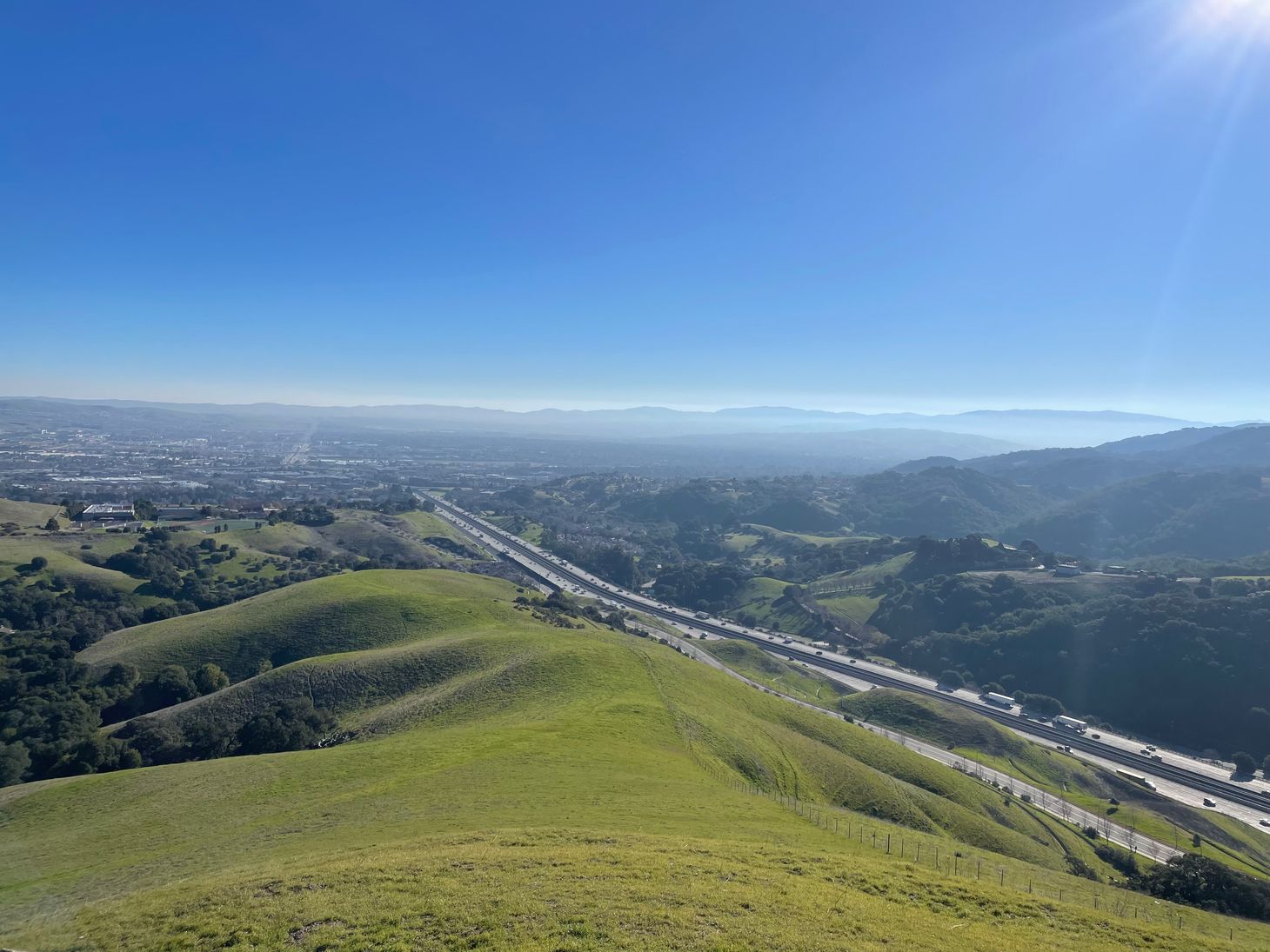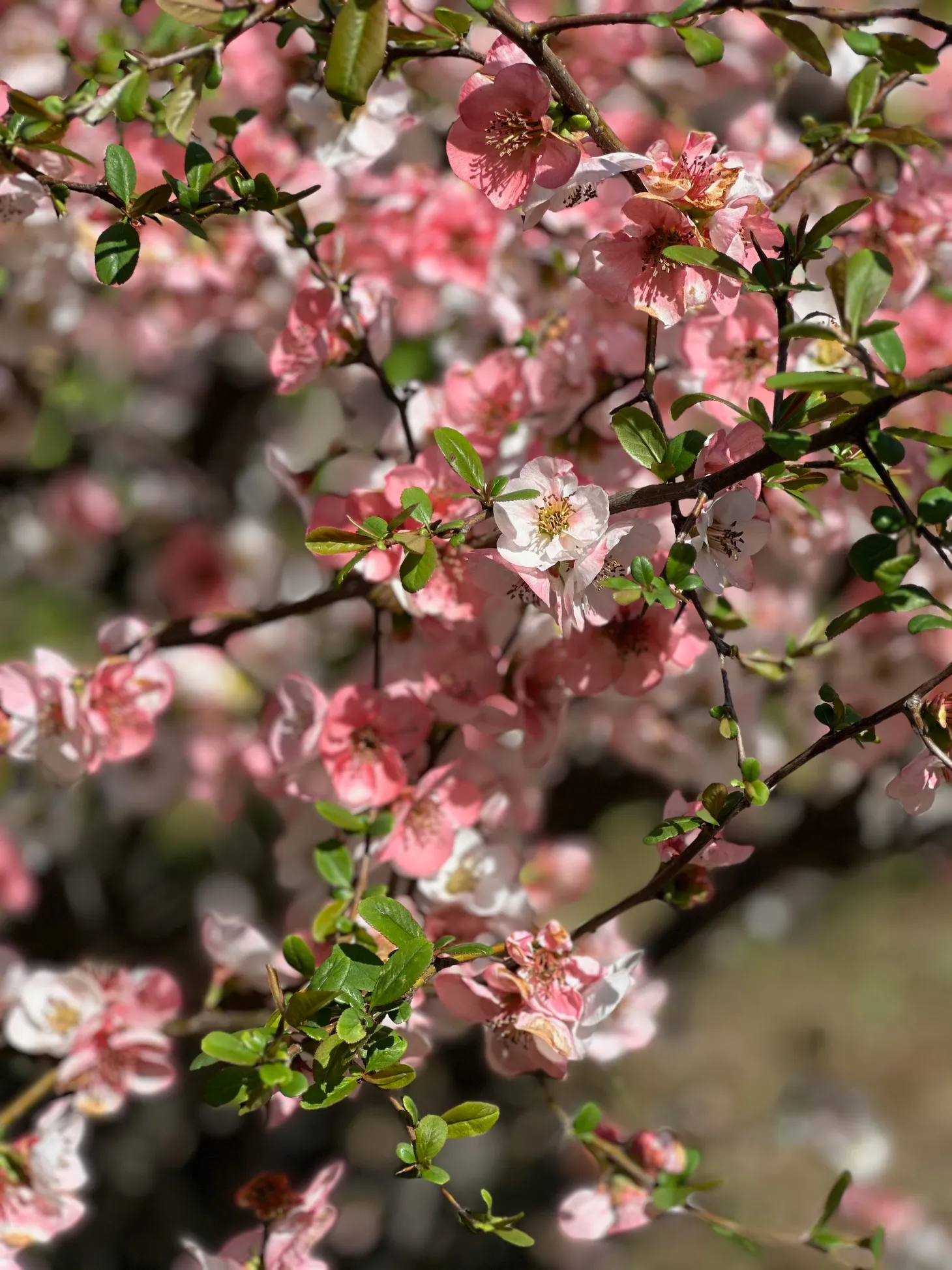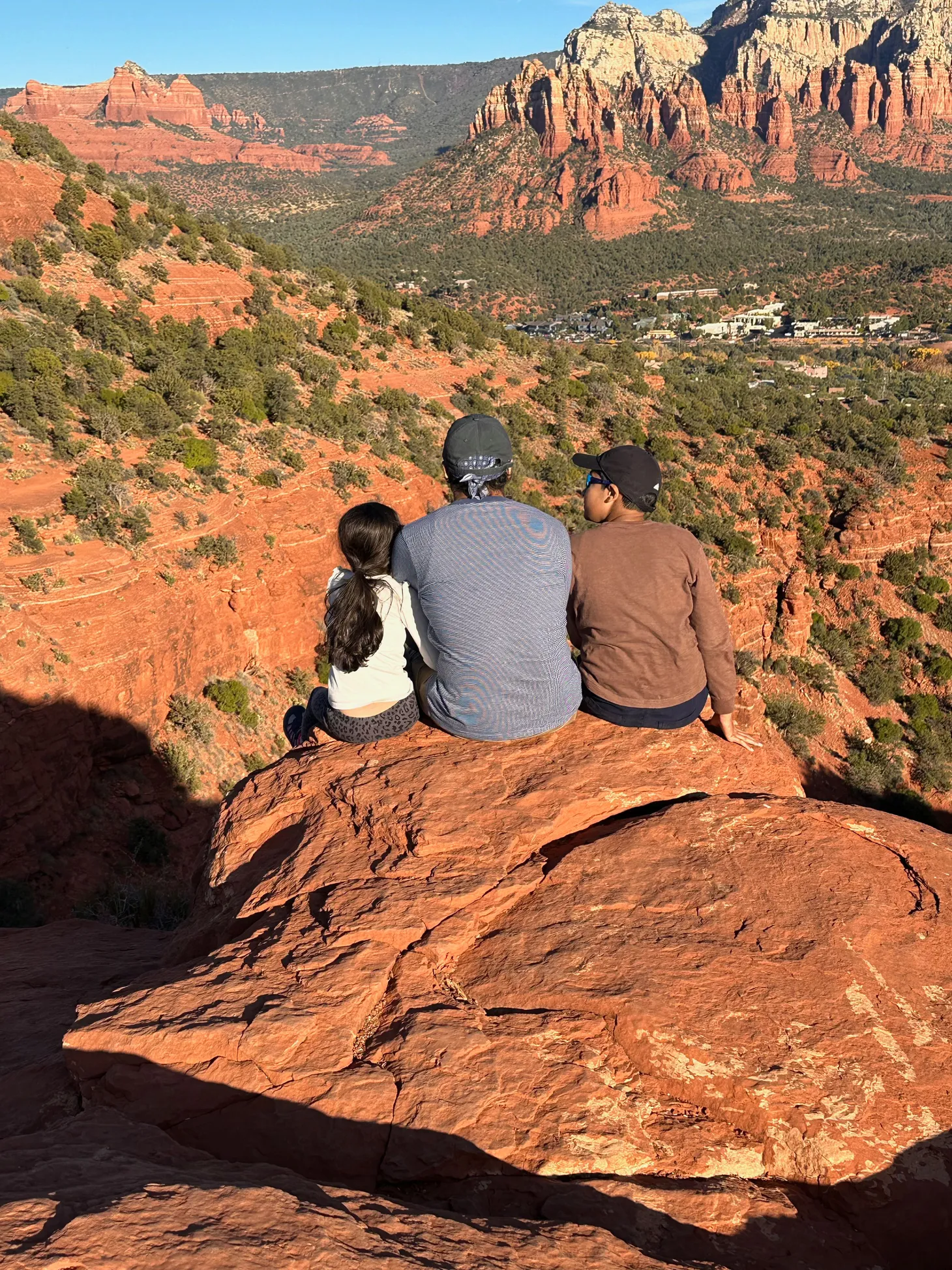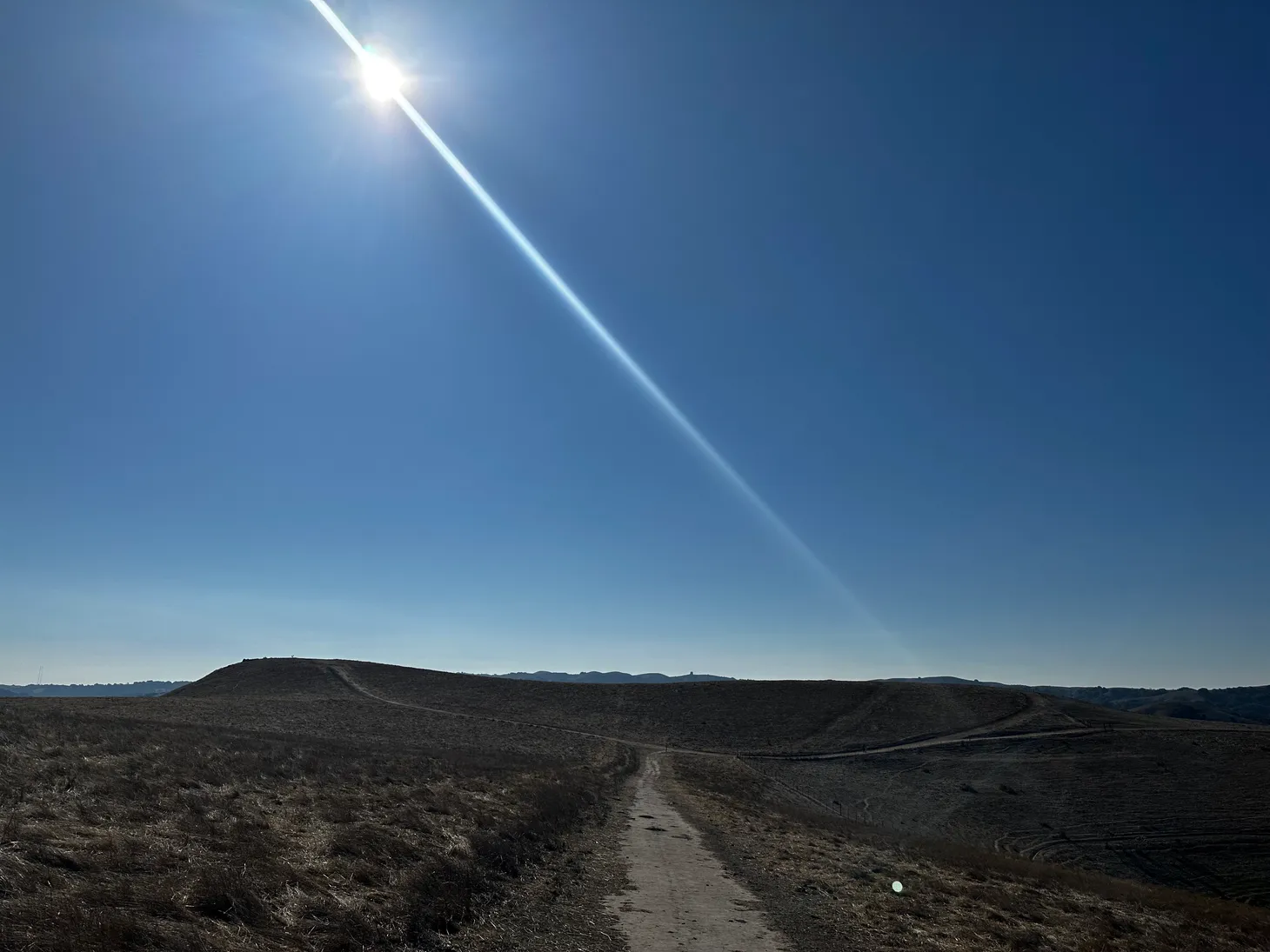Familiarity doesn't have to breed contempt
With curiosity, even the deeply familiar can produce delight.

I have been visiting a hiking trail near my house 2–3 times every week for over one and a half years. The hike culminates at a hill top called the Donlon Point. The total distance out and back from my front door is approximately 2.25 miles. It takes me about 45 minutes to complete.
My curiosity in the trail started growing when I made the decision to shelve the AirPods while taking walks. Not listening to anything, I realized I am observing my surroundings more. Observation brought questions. Finding answers made the surroundings more interesting.
Now, when I visit Donlon Point, I learn something new every time.
The official trailhead is at the Donlon Point staging area, about 0.7 miles from my house. The stretch before the trailhead runs down the hill on Dublin Boulevard. The first thing I noticed: I don’t know the trees that line both sides of Dublin Boulevard. I "saw" them every day, but it had never occurred to me what they were.
A fellow nature lover recommended an app from the California Academy of Sciences called Seek. With the phone camera pointed at the leaves of the trees, the app showed me that they were American Sycamore trees.
Oh, cool! American Sycamore lines the Dublin Boulevard. That small piece of knowledge made the area come alive. The trees became more than trees. I started noticing them. Like, how hundreds of plump squirrels gathered around the Sycamore roots scamper up the hill, as soon as they hear my footsteps on the sidewalk. Reared up on their back paws, they station themselves at their burrow entrances halfway up the hill, and watch me pass by every time. It is entertaining to watch them do their thing.
Why are so many of them here? I learned that the seeds from the mature Sycamore fruit, a burr-like ball, are an excellent food source for these squirrels. No wonder, they look well-fed.
One day, the undulating terrain makes me wonder about the altitude at various points of the hike. My phone’s compass (Thanks, Apple!) provides the data. My house has an elevation of 990 feet; the lowest point of the trail, at the intersection of Dublin Boulevard and Schaefer Ranch Road, is at 860 feet; Donlon Point itself rests at 1120 feet. Interestingly, the hike has a 440 feet of cumulative elevation gain. The inclines were opportunities to get in some cardio along with my hikes on the day I felt like going for it.
After the trailhead, the trail ascends sharply — 260 feet over 0.5 mile — in a zigzag pattern. I don’t mind the sudden strain because of what follows. Soon after, I get treated to the emerging views of San Francisco Bay past the San Leandro hills. When I sweep my eyes to the right, I can see San Francisco downtown on a clear day. Or a shroud of fog when it isn’t. To the left, I can see the whole expanse of Pleasanton Ridge.
At the top of the hill is a bench looking east. Eagle Scouts built it — I can make that out from their metallic logo riveted to the ground underneath the bench. When I sit on the bench and look eastwards, I can see windmills installed at the Altamont pass and 580 freeway passing through it, resembling a snake. Looking northwards, Mount Diablo is hard to miss. Also easy to spot is the Brushy peak in the Livermore area.

The bench at Donlon Point is a beautiful vista point to look at the Tri-Valley area — Livermore Valley on the left, Amador Valley straight ahead, and San Ramon Valley on the right. Like 580 freeway snakes east and west, I can spot 680 freeway snaking through Tri-Valley north and south. The town of Dublin sprung around where 580 and 680 intersect about 40 years ago and is often dubbed as the crossroads of the Bay Area. Donlon Point provides the physical experience of those crossroads.


The Wikipedia entry for Tri-Valley states that “the area is known for its Mediterranean climate, wineries, and nature”. I have never visited the Mediterranean, but Tri-Valley does have a unique climate. Before we moved to Bay Area two years ago, people used to say that California doesn’t have seasons. Visiting Donlon Point across one full year makes me think that there can sometime be all seasons within a day. The altitude of the point and its location amplified every element of the weather runs through the area — Wind, Heat, Cold, Fog, Mist, Rain.

Equally unique is its topology of rolling hills that are golden brown for much of the year. The hills turn greens briefly between November and February before gradually browning out during Spring and Summer. Perennial grasses cover these East Bay hills. Upon some research, I discovered it is a mix of wild oats, barley, rye, and mustard. I assume this to be the legacy of this land dotted with horse ranches in the past. There are also four types of clover on the hills around Donlon Point. One of them blooms with very pretty crimson flowers during the Spring. They are also stray carpets of lupine bushes along the inclines around the trail, which bloom with purple aromatic flowers in the middle of Spring, when the hillside also gets peppered with California poppies.


Often, I run into wandering coyotes. They try to run away into the canyon as soon as they spot me. The sign at the trailhead warns about the presence of mountain lions. Reading that sometimes creates a mild concern since I am often alone on the trail. But the sign includes directions on what to do if you encounter a mountain lion — acting big, making loud sounds, and gradually retreating away from the animal. I have read it many times. But I often wonder how will I execute those instructions if I do encounter a mountain lion.
A portion of the Donlon Point trail is within a cattle ranch. From Spring to late fall, the cattle roam freely around the hills, munching on the wild grasses. They drop around copious amount of cow dung cakes wherever they go. As soon they come on the pasture, the dung beetles follow. Soon after, a few different kinds of grasshoppers and desert lizards come to feed on the minor bugs that inhabit the dried-out dung cakes. The desert lizards seem to inhabit the same network of burrows in the ground, as the other common inhabitants of these hills, gophers, do.

The best part of the trail is the Sunsets. That's the time when Donlon Point transforms into a theater with the resplendence of the sun setting over San Francisco Bay in the background.

The deeper and longer experience of the trail hasn’t exhausted what it has to offer. On the contrary, it makes me want to visit it more. It doesn’t even come across like a hiking trail anymore. But more like an ecosystem teeming with life where something new transpires every day. I don’t feel like a passing visitor at Donlon Point, but more like a member of a long caravan of people who have passed through the area.
Subscribe to receive the latest posts in your inbox.


